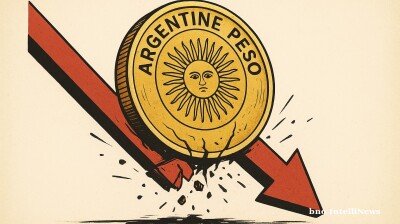The Philippine economy recorded stronger growth in the second quarter of 2025 compared with the first, primarily due to a spike in goods exports ahead of impending tariffs, according to ING. Despite this performance, the Bangko Sentral ng Pilipinas (BSP) is still anticipated to lower interest rates in August, as inflation remains well below target.
Second-quarter GDP rose by 5.5% year-on-year, meeting forecasts and slightly beating the market consensus of 5.4%. However, underlying data revealed a slowdown in domestic activity. Investment growth dropped sharply, contributing just 0.7% to overall expansion, while government expenditure growth eased to 1.5%.
The main driver of growth was exports. Net exports added 0.1% to GDP, a reversal from the 2% drag seen in the first quarter. Goods exports surged by 14% year-on-year, while imports rose by only 2.7%. This suggests a rush to ship goods, particularly electronics, manufactured products and gold, before tariffs took effect. Agriculture and services also made notable contributions. Agriculture, which represents 7.5% of GDP, climbed by 7% thanks to record harvests. Services expanded by around 7%, led by professional and business services.
Manufacturing lagged behind at 2.7% growth, indicating that the export boost may have been driven more by re-exports than domestic production. Looking ahead, restrained private investment is expected to weigh on growth, while consumer spending should stay firm amid falling inflation and strong employment. Export growth is forecast to ease later in the year, reflecting wider regional patterns, with infrastructure spending likely to play a decisive role in sustaining momentum.
Inflation fell to 0.9% in June, helped by lower food costs despite poor weather, while fuel prices kept transport inflation in negative territory. Although inflation is set to rise modestly, stable rice prices and a reversal in oil prices should keep it contained.
Given this, and the BSP’s stated intention to manage currency volatility, the central bank is still expected to implement two 25-basis-point cuts, one in August and another in the fourth quarter, bringing rates to 4.75% by year-end.
Data

Iran's central bank plans major currency intervention as rial tanks
Iran's Central Bank plans major currency supply intervention in Tehran and Dubai unofficial markets next week to reduce dollar rate from current IRR1.175mn level.

$2.74bn knocked off Uzbekistan's current account deficit in first half
Officials credit big improvement in trade balance and larger flows of remittances in explaining turnaround.

Annual inflation in Uzbekistan drops 0.8 pp to 8% in September
Both food and non-food prices up 6.1% year-to-date.

Marked fall in output hit Kazakhstan’s manufacturing in September, PMI shows
New orders, however, return to growth.




